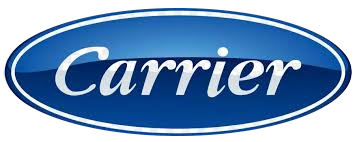
How Can I Reduce My Energy Costs?
Hey there, homeowners! Are you tired of shelling out big bucks for your monthly energy bills? We hear you loud and clear – and we're here to help! Whether you're looking to save money or reduce your environmental footprint (or both!), there are plenty of simple strategies you can implement to lower your energy costs and boost your home's efficiency. Let's dive in!
Assessing Current Energy Usage
First things first, let's take a peek at your current energy usage. Reviewing past utility bills can give you a good idea of how much energy you're using and where you might be able to cut back. Consider conducting a home energy audit to identify areas where energy is being wasted. This comprehensive assessment can uncover hidden issues like air leaks, insufficient insulation, or outdated appliances that may be driving up your energy bills. And if you're tech-savvy, consider investing in energy monitoring tools or smart meters to track your usage in real-time. These tools can provide valuable insights into your energy consumption patterns and help you pinpoint areas for improvement.
Improving Home Efficiency
Now that you have a better understanding of your energy usage, it's time to start making some changes. One of the easiest ways to lower your energy costs is by improving your home's efficiency. Start by sealing air leaks and adding insulation to keep your home cozy and comfortable year-round. Leaky windows, doors, and ductwork can allow valuable conditioned air to escape, forcing your HVAC system to work harder and driving up your energy bills. By sealing these leaks and beefing up your insulation, you can create a more airtight and energy-efficient home. Upgrading to energy-efficient appliances and lighting can also make a big difference in your energy bills. Modern appliances and LED light bulbs use significantly less energy than their older counterparts, saving you money on your monthly utility bills while reducing your environmental impact. And don't forget about programmable thermostats and smart home devices – they can help you save energy without lifting a finger! Programmable thermostats allow you to automatically adjust your home's temperature settings based on your schedule, ensuring that you're not wasting energy heating or cooling an empty house. Smart home devices like smart plugs and smart power strips can also help you reduce energy waste by automatically turning off electronics and appliances when they're not in use.
Adjusting Daily Habits
Sometimes, it's the little things that make the biggest difference. Simple changes to your daily habits can add up to big savings on your energy bills. Get in the habit of turning off lights and electronics when you're not using them, and make sure to use energy-saving settings on your appliances and electronics whenever possible. Small changes like washing your clothes in cold water, air-drying your dishes instead of using the dishwasher's heat-dry cycle, and using a microwave or toaster oven instead of your oven can also help you save energy and money. And when it comes to heating and cooling your home, set your thermostat to energy-efficient temperatures to save even more. In the winter, try lowering your thermostat a few degrees and snuggling up with a cozy blanket, while in the summer, raise your thermostat a few degrees and use fans to circulate cool air.
Taking Advantage of Incentives and Rebates
Speaking of incentives and rebates, be sure to take advantage of any available programs in your area. Federal and state tax credits, utility company rebates, and energy efficiency financing programs can all help make energy-efficient upgrades more affordable. Be sure to do your research and take advantage of any available incentives to maximize your savings. Many utility companies offer rebates for energy-efficient appliances, HVAC systems, and home improvements, so be sure to check with your local provider to see what incentives are available in your area. And don't forget about federal and state tax credits for renewable energy installations like solar panels and geothermal heat pumps. These tax credits can help offset the cost of your investment and make it more affordable to go green. In addition to tax credits and rebates, many utility companies offer financing programs to help homeowners finance energy-efficient upgrades. These programs typically offer low-interest loans or rebates for energy-efficient improvements, making it easier for homeowners to invest in energy-saving measures without breaking the bank.
Monitoring and Maintenance
Last but not least, don't forget to keep an eye on your energy usage and perform regular maintenance to ensure your energy-saving measures remain effective. Schedule regular HVAC maintenance to keep your system running smoothly, and monitor your energy usage to make adjustments as needed. Keep an eye out for any signs of inefficiency, such as sudden spikes in your energy bills or changes in your home's comfort levels. By staying vigilant and addressing any issues promptly, you can ensure that your energy-saving efforts continue to pay off in the long run.
In conclusion, reducing your energy costs doesn't have to be a daunting task. With a little effort and some simple changes, you can lower your energy bills and enjoy a more efficient, comfortable home. So, what are you waiting for? Let's start saving energy – and money – today! And if you need any assistance along the way, don't hesitate to reach out to us at Beachside Air Conditioning. We're here to help you achieve your energy-saving goals and enjoy a more comfortable home environment.





.png)

